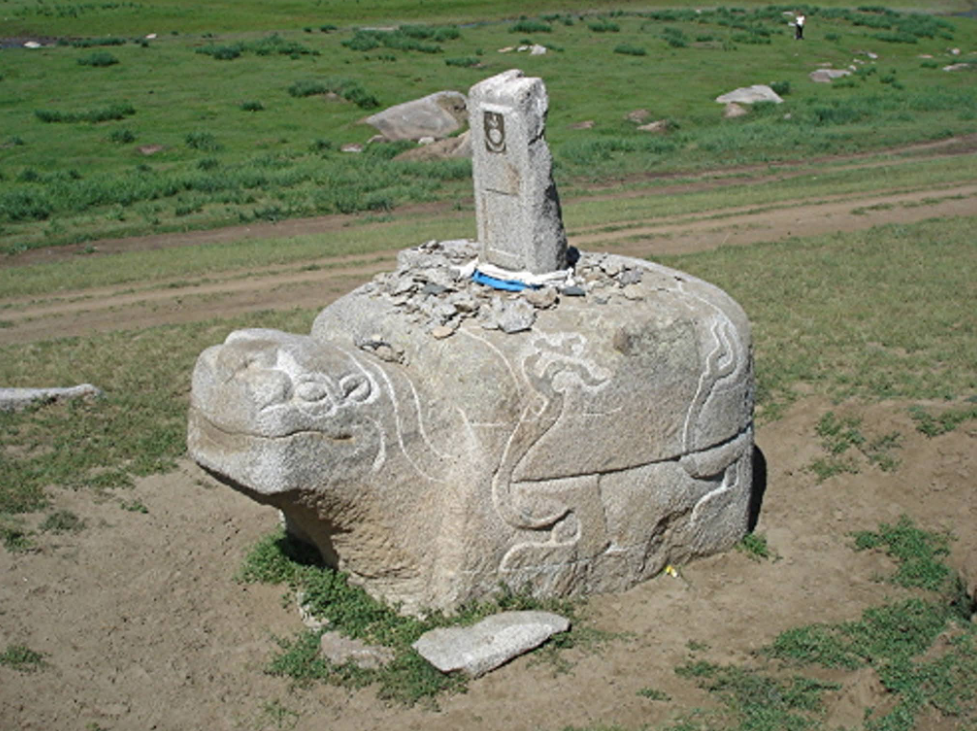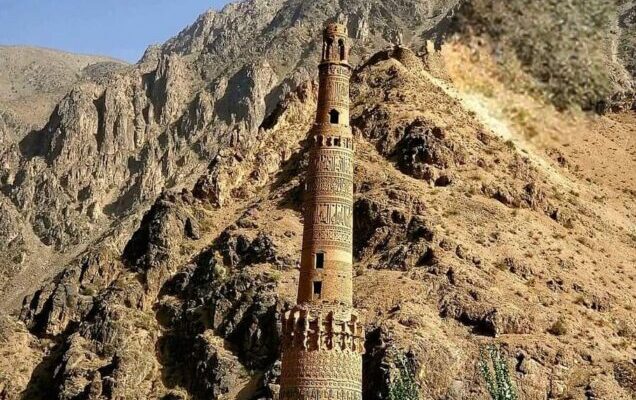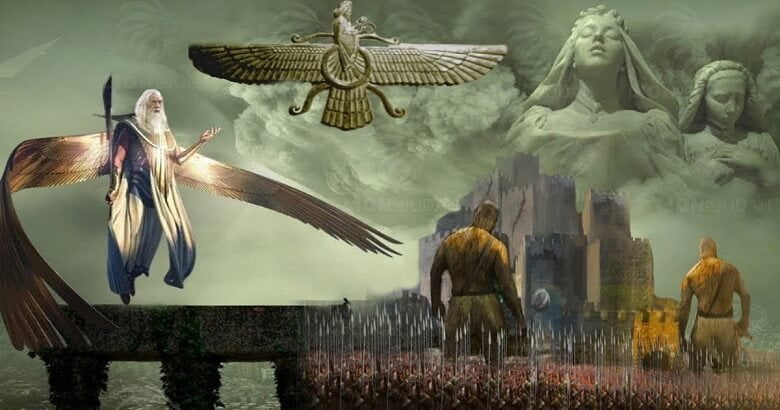Stone Turtle of Karakorum, Mongolia, c.1200s CE: this statue is one of the few surviving features of Karakorum, which was once the capital city of the Mongol Empire; a khadag (ceremonial scarf) has been placed on the statue as a symbol of respect.
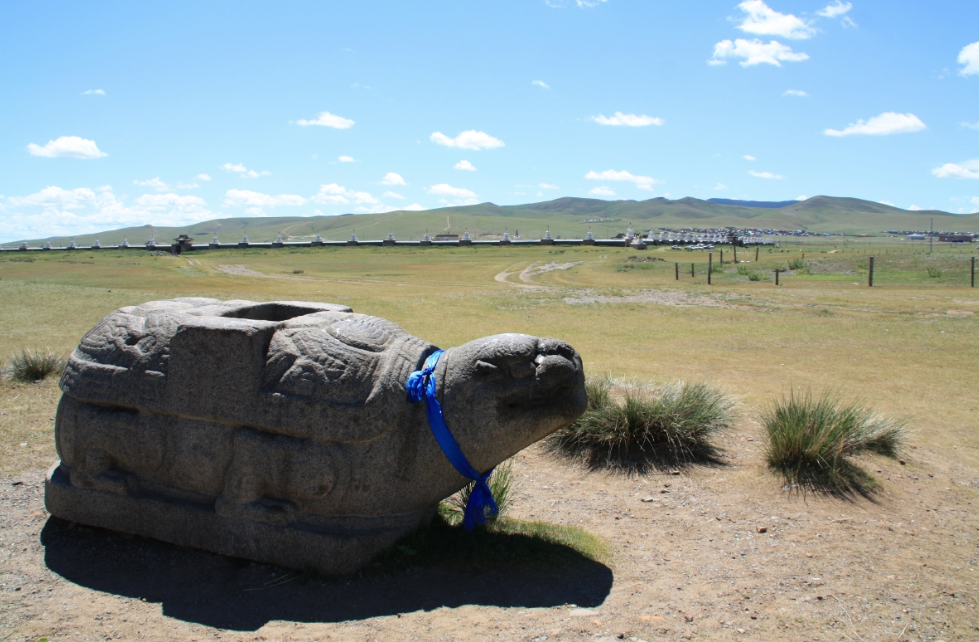
Outside the monastery walls of Erdene Zuu Khiid are two stone turtles. Four of these sculptures once marked the boundaries of ancient Karakorum, acting as protectors of the city (turtles are considered symbols of eternity). Each of the turtles originally had an inscribed stone stela mounted vertically on its back.
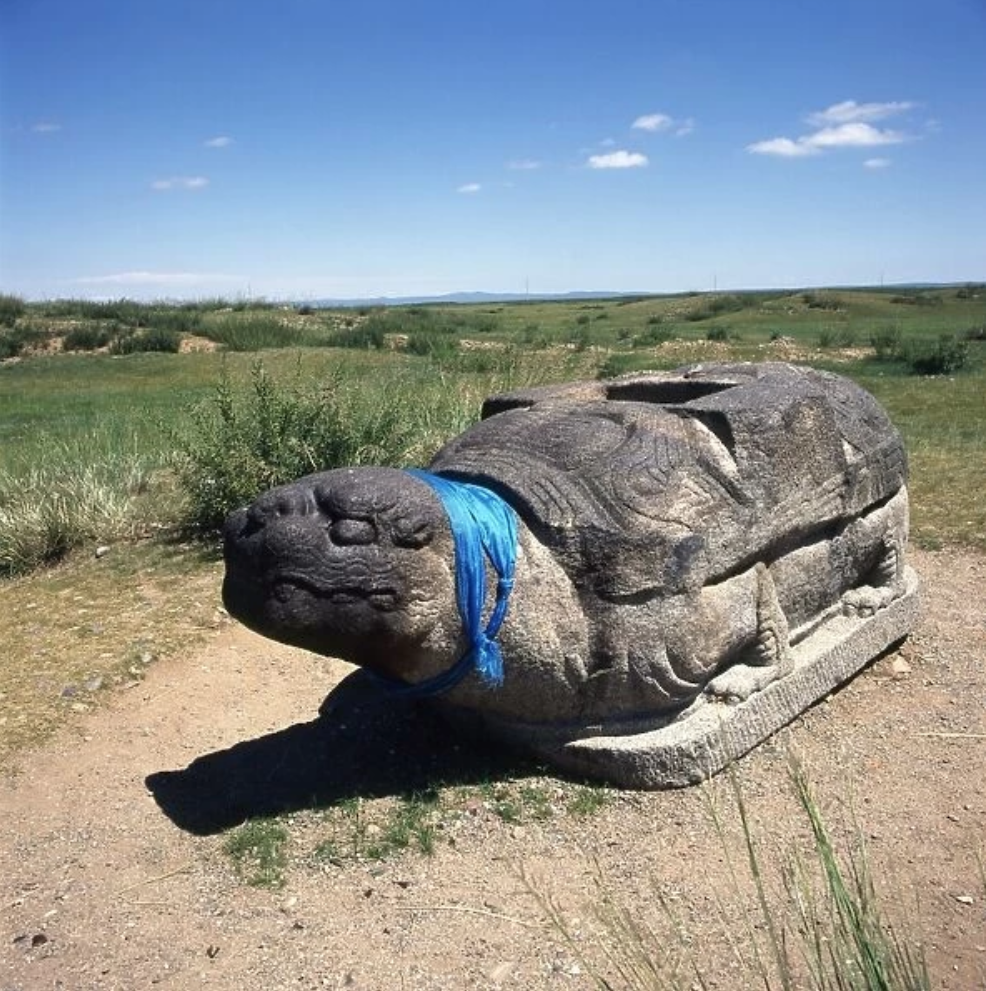
One is easy to find: just walk out of the northern gate of the monastery and follow the path northwest for about 300m. This location is also the site of an archaeological excavation led by a German team.

You’ll probably need a car to get to the other turtle (What3words: informed.exodus.rasped), which is on the hill south of the monastery – otherwise it’s a 45-minute walk. It has a more scenic location, but is blighted by being within a caged enclosure. En route you’ll encounter the Penis Stone (What3words: hamsters.attachments.compasses), a historical stone phallic sculpture used as a reminder for young monks to remain celibate.
